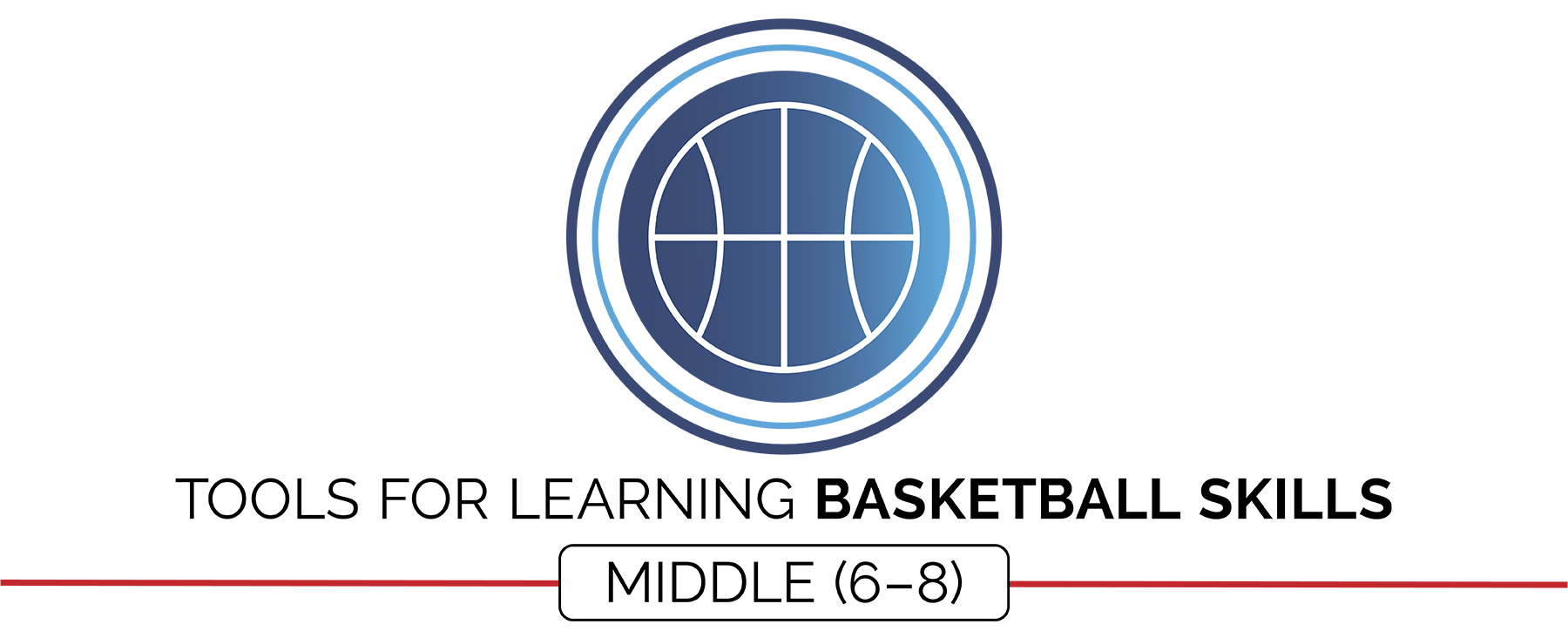Created by: Aaron Hart, Ami Gibson, Brian Devore, Charla Krahnke, Colin Arvanitakis, Daniel Hill, Rachel Weir, Rich Wiles
Special Contributions by: Deedi Brown & Joey Feith
Module Design & Layout: Jennifer Truong
OPEN Basketball Nation Logo: Asia Kehl
It would be very interesting to know what Dr. James Naismith would think about the evolution of a game that he invented in December of 1891. Although his vision for the game probably didn’t include the NBA, slam dunk contests, or 3-point shoot-outs, we believe he would be happy to know that millions of students around the world use basketball as a way to stay active year-round while enjoying the benefits of physical activity with friends.
In 2019, 128 years after Dr. Naismith’s first game, the OPEN Basketball Nation celebrates the roots of the game by providing physical educators and youth coaches the tools to teach basketball as a lifelong activity that promotes the very best in humanity. This Middle School Basketball module is just one part of the OPEN Basketball Nation movement. For more information and resources, visit www.openphysed.org/basketballnation
Module Documents
Complete Module Packet:
Module Overview:
Required Materials:
All Module Activities:
Sample Lesson Plan:
Academic Language Cards:
Station Cards:
Skill Cards:
Half-Court Basketball Rules:
Universal Design Adaptations:
Activity Plans
All-Star Passing:
Dribble Stoppers:
Corner to Corner:
Money in the Bank:
Three to a Hoop:
Challenger:
POKE:
Kareem Abdul-Jabbar:
Can't Stop Me Stations:
Assessments
Self-Assessment Worksheet:
Academic Language Quiz:
Holistic Performance Rubric:
Social & Emotional Learning Journal:
Teacher Evaluation
Teacher Self-Evaluation/Reflection Guide:
Planning Tools
Blank Activity Plan Template:
Blank Lesson Plan Template:
Can’t see the file links? Register for FREE today to access all of the modules. SIGN UP HERE
National Standards and Outcomes Focus for Basketball
Standard 1.Demonstrates competency in a variety of motor skills and movement patterns.
- Standard1 [M4.6]: Passes and receives with hands in combination with locomotor patterns of running and change of direction and speed with competency in invasion games such as basketball, flag football, speedball, or team handball (6).
- Standard1 [M8.6-8]:Dribbles with dominant hand using a change of speed and direction in a variety of practice tasks (6); Dribbles with dominant and non-dominant hand using a change of speed and direction in a variety of practice tasks (7); Dribbles with dominant and non-dominant hand using a change of speed and direction in small-sided game play (8).
- Standard 1 [M10.6-7]Shoots on goal in a dynamic environment as appropriate to the activity (6); Shoots on goal with accuracy in small-sided game play (7).
- Standard 1 [M11.6-8]: Maintains defensive ready position, with weight on balls of feet, arms extended, and eyes on midsection of the offensive player (6); Slides in all directions while on defense without crossing feet (7); Drop-steps in the direction of the pass during player-to-player defense (8).
Standard 2.Applies knowledge of concepts, principles, strategies and tactics related to movement and performance.
- Standard 2 [M2.6-8]: Executes at least one the following offensive tactics to create open space: moves to open space without the ball; uses a variety of passes; uses pivot, fake, or give & go (6); Executes at least two of the following offensive tactics to create open space: give & go; a variety of passes; fakes, pivot) (7); Executes at least three of the following offensive tactics to create open space: moves to create open space on and off the ball; uses a variety of passes, fakes, and pathways; give & go (8).
- Standard 2 [M4.6-8]: Reduces open space on defense by making the body larger and reducing passing angles (6); Reduces open space on defense by staying close to the opponent as he/ she nears the goal (7); Reduces open space on defense by staying on the goal side of the offensive player and reducing the distance to him/her (third-party perspective) (8).
- Standard 2 [M6.6-8]: Transitions from offense to defense or defense to offense by recovering quickly (6); Transitions from offense to defense or defense to offense by recovering quickly and communicating with teammates (7); Transitions from offense to defense or defense to offense by recovering quickly, communicating with teammates, and capitalizing on an advantage (8).
Standard 3.Demonstrates the knowledge and skills to achieve and maintain a health-enhancing level of physical activity and fitness.
- Standard 3 [M7.6-8]: Identifies the components of skill-related fitness (6); Distinguishes between health-related and skill-related fitness (7); Compares and contrasts health-related fitness components (8).
Standard 4. Exhibits responsible personal and social behavior that respects self and others.
- Standard 4 [M1.6-8]: Exhibits personal responsibility by using appropriate etiquette, demonstrating respect for facilities, and exhibiting safe behaviors (6); Exhibits responsible social behaviors by cooperating with classmates, demonstrating inclusive behaviors, and supporting classmates (7); Accepts responsibility for improving one’s own levels of physical activity and fitness (8).
- Standard 4 [M6.6-8]:Identifies the rules and etiquette for physical activities/games and dance activities (6); Demonstrates knowledge of rules and etiquette by self-officiating modified physical activities/games or following parameters to create or modify a dance (7); Applies rules and etiquette by acting as an official for modified physical activities/games and creating dance routines within a given set of parameters (8).
Standard 5. Recognizes the value of physical activity for health, enjoyment, challenge, self-expression, and/or social interaction.
- Standard 5 [M3.6-8]:Recognizes individual challenges and copes in a positive way, such as extending effort, asking for help/feedback, and/or modifying the tasks (6); Generates positive strategies such as offering suggestions/assistance, leading/following others, and/or providing possible solutions when faced with a group challenge (7); Develops a plan of action and makes appropriate decisions based on that plan when faced with an individual challenge (8).
- Standard 5 [M6.6-8]: Demonstrates respect for self and others in activities and games by following the rules, encouraging others, and playing within the spirit of the game or activity (6); Demonstrates the importance of social interaction by helping and encouraging others, avoiding trash talk, and providing support to classmates (7); Demonstrates respect for self by asking for help and helping others in various physical activities (8).

